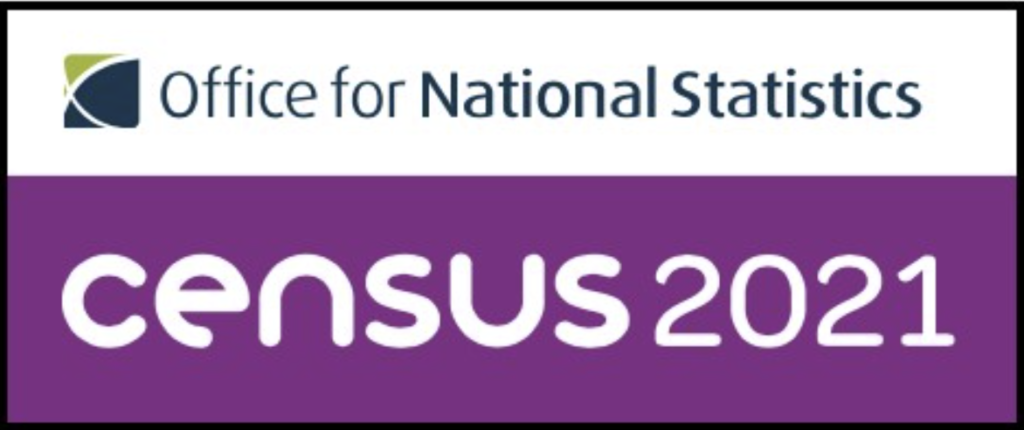 Abraham Lincoln
If given the truth, the people can be depended upon to meet any national crisis...
Abraham Lincoln
If given the truth, the people can be depended upon to meet any national crisis...
 Guildford news...
for Guildford people, brought to you by Guildford reporters - Guildford's own news service
Guildford news...
for Guildford people, brought to you by Guildford reporters - Guildford's own news service
Opinion: 2021 Census Confirms Local Plan’s Population Projections for Guildford Were Wrong
Published on: 13 Jul, 2022
Updated on: 15 Jul, 2022
Niels Laub is a retired architect. His interest in the Local Plan stems from his involvement with the Guildford Residents Association. He became concerned that the population projections in the plan were flawed and gave evidence at the Public Examination of the plan as a private resident
He is not a member of any national political party but is a member of both Residents for Guildford and Villages (R4GV) and the Guildford Greenbelt Group (GGG).
The current Local Plan for Guildford which covers the years 2015 – 2034 was adopted in April 2019 and set a housing target of 562 dwellings per annum.
When it was adopted, local residents had two major concerns (1) that the housing target was inflated well above the demographically led demand and (2) that the supply of development land far exceeded the housing target resulting in the release of 1200 hectares from the green belt.
Despite considerable opposition at the time, the Local Plan was forced through one week before the Local Elections.
According to figures from the Office of National Statistics (ONS) issued on May 24 2018, if you just take natural change (births and deaths) and net internal migration (that is movement within the UK), the population of Guildford was actually projected to decline over the life of the plan.
Apparently, the entire projected increase in the population of Guildford was due to net international migration of which, according to the ONS, the majority were overseas students attending the University of Surrey.
The West Surrey SHMA (Strategic Housing Market Assessment), used as evidence to generate the housing target, was unsound in two significant ways because:
(1) overseas students, who are only here on a temporary basis to study, are included in statistics for international migration which has an inflationary effect on population projections for Guildford and
(2) the term-time address of students is taken as their permanent place of residence making the population of Guildford appear to have a very high proportion of people in the 18-24 year age bracket who are assumed to have a high probability of forming new households and settling in Guildford when in reality they move away from Guildford on completion of their studies.
 To make matters worse, the total site allocations in the Local Plan, which include 1,200 hectares of the green belt, have the potential to deliver 14,602 homes over the life of the plan, which contrasts markedly with the total housing requirement of 10,678 homes, representing a very substantial oversupply of land for development and questions whether there are sufficient, or indeed any, “exceptional circumstances” to justify the release of so much land from the green belt.
To make matters worse, the total site allocations in the Local Plan, which include 1,200 hectares of the green belt, have the potential to deliver 14,602 homes over the life of the plan, which contrasts markedly with the total housing requirement of 10,678 homes, representing a very substantial oversupply of land for development and questions whether there are sufficient, or indeed any, “exceptional circumstances” to justify the release of so much land from the green belt.
In 2020 it became apparent that residents in Coventry had similar concerns about inflated housing targets leading to the very significant loss of green belt in Warwickshire.
A complaint was made to the Office for Statistical Regulation (OSR) leading to a report that concluded that “there were some strong concerns expressed about the potential bias in the emigration data for some groups, such as international students, that are hard to count” and that “fixes have not done enough to address the overestimation of these groups in some areas. This has led to an over reliance on insufficiently robust data to inform local planning decisions such as the need to build additional schools and housing”.
A letter from Ed Humpherson director-general for Regulation at the OSR to Guildford Council which stated that “we found that the population estimates for some cities, such as Guildford, did seem to be inconsistent with, and potentially higher than local evidence would suggest”.
GL Hearn, the consultants employed by Guildford Council to prepare the Strategic Housing Market Assessment (SHMA), based their housing forecasts on the 2014 Sub National Population Projections (SNPP).
These projections forecast a population for Guildford of 154,000 by the year 2021. According to the ONS Census 2021 released on June 28, the actual population for Guildford in 2021 was in fact 143,600, significantly less than that which was originally forecast and on which the housing target of 562 per annum was based and demonstrates that the ONS methodology must be deficient in some respects.
I am concerned that large areas of the green belt around Guildford have been allocated for development based on inaccurate and misleading statistics. I have brought this to the attention of GBC but is reluctant to carry out a review of the Local Plan because it is concerned that the use of the Standard Method for Assessing Housing Need would result in an even higher housing target.
But paragraph 61 of the National Planning Policy Framework states that “to determine the minimum number of homes needed, strategic policies should be informed by a local housing need assessment, conducted using the standard method in national planning guidance – unless exceptional circumstances justify an alternative approach which also reflects current and future demographic trends and market signals”.
I have concluded that the discrepancy between the 2014-based population projections on which the housing targets were based and the results of the 2021 Census is so significant that a review would most certainly be justified on the grounds of “exceptional circumstances” particularly bearing in mind that the most recent 2018-based projections for the number of households in Guildford estimate a requirement for only 121 dwellings per annum over the life of the plan.
Responses to Opinion: 2021 Census Confirms Local Plan’s Population Projections for Guildford Were Wrong
Leave a Comment Cancel reply
Please see our comments policy. All comments are moderated and may take time to appear. Full names, or at least initial and surname, must be given.
Click on cartoon for Dragon story: Public Asked for Views on SCC’s Proposal for Reduced Speed Limits






Recent Articles
- Letter: We Should All Have a Say in How Our Local Government Is Reorganised
- Dragon Review: Madam Butterfly – Grange Park Opera
- Letter: PIP Claimants Under-claim
- Flashback: Council Report Accepts Juneja Case Has Caused ‘Reputational Damage’
- Revealed Survey Shows SCC’s Preferred Two-unitary Option Has Least Public Support
- Highways Bulletin: Junction 10 Closures and Making Strides for Walk to School Week
- New River Boats for Surrey Care Trust
- Body Found in Woodland Believed To Be Missing 69-year-old
- Guildford Choral Promises a Summer Evening Spectacular
- Volunteers Are Needed To Test My Wearable Wellbeing Technology


Recent Comments
- Patrick Bray on SCC Intends to Back Public Survey Result and Shorten Summer School Holidays
- Patrick Bray on Work to Repair Cottage on Closed A281 Underway
- Jack Bayliss on Work to Repair Cottage on Closed A281 Underway
- Eric Gurney on Work to Repair Cottage on Closed A281 Underway
- Mark Coxhead on Major Disruption on the Railway During Hot Day in 1900
- Ian Stronge on Letter: Not All PIP Claimants Need It
Search in Site
Media Gallery
Dragon Interview: Local Artist Leaves Her Mark At One of England’s Most Historic Buildings
January 21, 2023 / No Comment / Read MoreDragon Interview: Lib Dem Planning Chair: ‘Current Policy Doesn’t Work for Local People’
January 19, 2023 / No Comment / Read MoreA3 Tunnel in Guildford ‘Necessary’ for New Homes, Says Guildford’s MP
January 10, 2023 / No Comment / Read More‘Madness’ for London Road Scheme to Go Ahead Against ‘Huge Opposition’, Says SCC Leader
January 6, 2023 / No Comment / Read MoreCouncillor’s Son Starts Campaign for More Consultation on North Street Plan
December 30, 2022 / No Comment / Read MoreCounty Council Climbs Down Over London Road Works – Further ‘Engagement’ Period Announced
December 14, 2022 / No Comment / Read MoreDragon Interview: GBC Reaction to the Government’s Expected Decision to Relax Housing Targets
December 7, 2022 / No Comment / Read MoreHow Can Our Town Centre Businesses Recover? Watch the Shop Front Debate
May 18, 2020 / No Comment / Read More








Roshan Bailey
July 13, 2022 at 11:35 pm
Very interesting, thank you. What scope is there, if any, for a review and potential adjustments to the Local Plan in response to these findings? And is there anything we could all be doing to trigger a review and consequent changes?